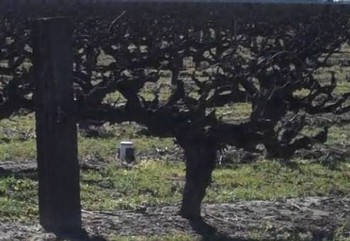Winter in the Vineyard

Winter is a quiet time in the vineyard—the vines are dormant, which is the best time for pruning. Regular annual pruning is vital to the health of the vine and helps to control vigor, allowing the vine to produce quality fruit. The main objective is to produce a balanced vine so that dappled sunlight can enter the canopy just enough to ripen the fruit. As a general rule, we need 10 to 14 leaves per cluster of fruit on each cane or branch. There’s more to pruning, however, than a “snip” here and a “snip” there. Pruning takes skill. There are three main pruning methods for wine grapes:
- Head-trained spur pruned (vines trained to a wooden stake) is the earliest for older vineyards, such as Old Vine Zinfandel (shown here), and encourages low-production, high-quality grapes.
- Cane pruning is the most time-consuming and requires the most skill. Cane pruning can offer better frost protection than other methods due to the amount of buds remaining, along with potentially higher cluster counts.
- Spur pruning involves removing the new one-year-old wood growing from the spurs of a cordon (a horizontal shoot), leaving one to three buds on each spur.
Whichever pruning method is used, careful, accurate, and consistent execution is required to maximize both the quality of fruit and the yield.
Cheers,
George Troquato, Winemaker
